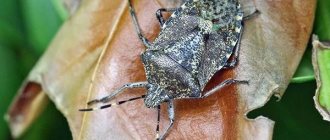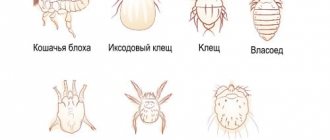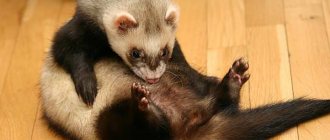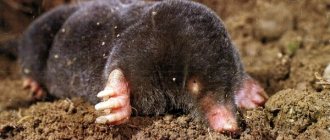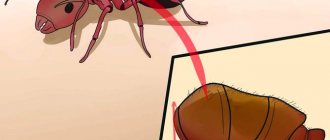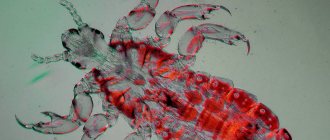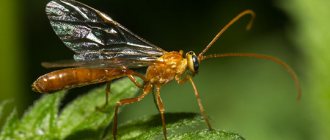House mice are the largest genus of mammals in the rodent order, which prefers to coexist with humans. This is where the name of the genus itself comes from. But this does not mean at all that since these mice are called “house mice,” they must necessarily live “in the house,” as such. Many rodents, especially in the summer, prefer to live in open spaces, but in the winter they tend to move to barns, sheds, dwellings and other buildings belonging to people, where in the winter they can easily get food for themselves.
Description
The house mouse is a mammal of the Mouse genus; this animal rarely grows in length more than 10 cm, the average length is 7-8 cm. They have a thin tail, the length of which reaches more than half the length of the main body. Unlike the body itself, the tail, instead of fur, is covered with horny scales, between which very sparse and short hairs grow. In most cases, all house mice are gray. There are lighter and darker shades, but ash gray is by far the most common color. Although there are also individuals with a gray-brown color, and even white ones. Desert mammals have a yellowish-sandy color. The fur on the abdomen of any variety of mouse is always paler.
Females have 5 nipples, these are the only clearly defined differences by gender. Each has rather long vibrissae (sensitive antennae in the front of the muzzle), black beady eyes and small, rounded ears.
Secluded housing
In most cases, the house mouse settles on soft soil that is not prone to drying out. To make it easier to make moves, the walls of the tunnels did not collapse. They build a hole 100 cm long. There must be an entrance and 2 emergency exits. The nest chamber is built at a distance of 30 cm from the ground surface. In winter they go deeper - up to 65 cm in depth. The diameter of the nest is about 25 cm. House mice prepare a soft bedding from twigs, leaves, moss, and all convenient materials.
Life of a House Mouse
House mice often inhabit ready-made burrows of voles, moles, hamsters, and other rodents. Or they build a nest under stones, in natural depressions in the ground, under a mound of leaves.
In human housing, house mice place their nests in well-protected, secluded places. Prefer to settle:
- under the floor;
- between walls;
- in the attic;
- under trash cans;
- in places where food waste accumulates;
- in the vegetable store.
To build a nest, various available, suitable materials are used: straw, pieces of fabric, twigs, hair, feathers, polystyrene foam, polyurethane foam.
Interesting!
The house mouse always tries to keep the nest clean. If there are parasites, the house is wet, or it just becomes uncomfortable, they abandon it without remorse and build a new nest.
Original range
The original habitat of the house mouse, a mammal of the genus Mouse, is considered to be the northern part of the Hindustan Peninsula, the north of the African Peninsula or the Arabian Peninsula. The remains of rodents of this species are found everywhere there. Most likely, having evolved somewhere in one of these areas, they then quickly spread to the surrounding areas.
But saying “quickly” does not mean that the settlement took place over a period of tens or hundreds of years. Such rapid settlement throughout the world became possible only with the help of man, when he began to explore the sea.
How did the resettlement happen?
At first, the dispersal of mammals of the genus Mouse (domestic mice) from their original habitats proceeded spontaneously and naturally. Steppes, fields, and semi-deserts were native to these animals, but little by little people began to lead a sedentary lifestyle and mastered agriculture. And at the moment when man began to create his first granaries, rodents realized that they did not need to store food for the winter, they could simply move into the barn and spend the winter there quite comfortably. It was from this moment that the now generally accepted term “house mouse” began to have a real basis.
Since people mastered navigation, mice began to settle around the world on their own ships, all in the same holds designed for storing grain. Only the northern and southern parts of the globe were not subject to settlement by mice, since these animals are heat-loving and do not tolerate cold. But residents of other parts of the world have been cohabiting with house mice for many years. Only mice benefit from such cohabitation. For a person from such “cohabitation” there are only losses.
Nutritional Features
The marks left on plastic, rubber, wood and other inedible materials give the impression that house mice are omnivores. In nature, the rodent is content with seeds. Mice prefer grains, cereals, and legumes in food. Eats seeds of cultivated and wild plants.
A certain part of the diet is occupied by insects, worms, caterpillars, larvae, and carrion. When there is a lack of water, house mice eat the succulent parts of the plant. A rodent needs about 3 ml of liquid per day. If this rule is not followed, the animal dies from dehydration within 15 days. When there is an excess of food, rodents make food reserves for a rainy day. Occasionally they destroy birds' nests and feast on eggs and small chicks.
In a human home, the diet of mice expands significantly. Pests eat all food supplies, any products. And also soap, candles, indoor flowers, glue.
Important!
The structure of mice has its own characteristics. The teeth of rodents have unusual properties. Each jaw has incisors that grow daily throughout life. The animals are forced to constantly grind them down, otherwise they will not be able to close their mouths. For this purpose, they chew hard, inedible materials - wood, plastic, foam plastic, brick, rubber and the like.
Nutrition and reproduction of rodents
Features, lifestyle, habits, sense organs, life expectancy
The mammal house mouse is a very mobile, fast and nimble creature. In open areas, such an animal can reach speeds of up to 13 km/h, and their agility makes these creatures capable of shortening and eluding a predator, even if it catches up with it.
Such mice lead a predominantly twilight or nocturnal lifestyle. They are very shy and have hyperdeveloped sensory organs. Sensitive paws detect any vibration of the earth's surface, and a heightened sense of smell and hearing are able to distinguish the slightest vibrations of odors and sound waves.
They do not need lighting at all for normal orientation. They are well oriented using their sense of smell and sensitive whiskers. Their only flaw is their eyesight. It perceives relatively well what is happening at a great distance from them, while close up the object in front of their eyes is blurred and does not have a clear shape.
During the warm season, mice can move from human homes to the street. They feel great in nature. They build small burrows with several exits. The main abode is covered with bird feathers and dry leaves. Animals that exist in virgin nature, isolated from humans, are forced to create a storage facility in their burrows, in which the animals store food for the winter. But rodents living within a residential area invariably return for the winter to warm human homes or agricultural buildings, where they spend the winter very well, causing a lot of inconvenience to people.
Mice of this species do not live long in the wild - from a year to a year and a half. But in captivity (if you can call the cozy walls of a residential building with garbage cans filled with food) they can live twice as long.
Lifestyle of house mice
All species of house mice are very closely and closely related to humans. They do well in the wild, but move closer for food.
In autumn, house mice may take a liking to houses or outbuildings. They overwinter in warm storage areas, stacks, and warehouses. Here they happily feed on people's supplies.
In summer, animals return to the fields, closer to water bodies. There they live in burrows, which they specially create or become neighbors of other animals, and can create cracks.
Where does a mouse make its home?
In the neighborhood of a person, a mouse can make a nest for itself in the attic, in the waste, or under the floor. They use everything they can find to decorate their homes - fabric, feathers, paper.
They are active at night. Often the first signs of appearance are noise and mouse droppings.
The colony and its foundations
Mice run very fast, jump and climb, and can swim. In nature they live in a population or family. There is always one male in a group, but several females. The men are aggressive, but clashes within the family occur only when it is necessary to drive out older individuals.
Are you afraid of mice?
Very Not a drop
What does a house mouse eat?
Animals are unpretentious and omnivorous. They mainly prefer plant foods, but can feast on larvae, insects and even carrion.
Eaten in nature:
- seeds;
- legumes;
- rice;
- oats
In the company of people:
- meat;
- chocolate;
- dairy;
- soap.
There is an opinion that the favorite delicacy of mice is cheese. Is this really true?
Life cycle of a mouse
Reproduction
Mice are prolific and can breed up to 14 times a year. But usually there are about 10 of them.
Cubs
One litter can have up to 12 cubs. They are small, naked and blind when born and require milk.
Maturation
At 21 days, mice become independent, at 40 days they are able to reproduce.
Lifespan
The lifespan of a mouse in nature does not reach 18 months. They often fall prey to predators.
Features of the mouse sensory organs
| Vision | Weak. Farsightedness and lens accommodation. |
| Hearing | Very sharp, critical, up to 100 kHz. |
| Smell | Good thing, the vibrissae are involved in searching for food. |
| Glands | There are sweat glands on the paws that mark territory. |
| Yakobson organ | Responsible for detecting the pheromones of other mice. |
Reproduction and numbers
House mice are exceptionally fertile. One female at a time can give birth to on average up to 12 mouse offspring, and given that they recover very quickly after childbirth and are ready to conceive again after a few days, they bear offspring up to 10 times during the warm season. It is also complicated by the fact that newly born females, after 2 months from the date of birth, are already ready to bear offspring. Therefore, during the warm period of the year, the number of mice increases many times.
But with the arrival of winter, many small rodents die, not having time to adapt to the conditions or for other reasons. Often the reason why more mice die is due to complex hierarchical relationships in mouse families.
Mouse - description and external characteristics
These small rodents are distributed throughout the entire earth, excluding the extreme northern and high-mountain regions. The closest relatives of mice are jerboas, mole rats, hamsters and dormice. And more distantly related are rats, chinchillas, porcupines, beavers, and guinea pigs. In total, the Mouse subfamily includes 121 genera and more than 300 species.
The mouse is a small animal with an elongated and pointed muzzle, large round ears and bulging beady eyes. A long, hairless or slightly furred tail is a distinctive feature of the animal. The limbs, which are not the same in length, are adapted for digging and moving along vertical and horizontal surfaces. The body length of a rodent can vary from 3 to 20 cm, weight - from 15 to 50 g.
Mice have a special bite. On the lower and upper jaws the animal has 2 chisel-shaped teeth, which are continuously growing. Rodents are forced to constantly grind them down, which is why their incisors are very sharp.
Animals from the Mouse family have good eyesight and can distinguish between red and yellow shades. The usual body temperature of these rodents ranges from 37.5 to 39⁰C. The maximum lifespan of mice is 4 years.
Hierarchy
The hierarchy of the house mouse established in the process of evolution is as follows: one colony or family group of mice is under the strict leadership of a dominant male. Under his patronage there are several females who continuously produce offspring. The offspring are raised in the family “collective” until they reach sexual maturity (up to 2 months), after which all the “new ones” are expelled from the colony, since during this time the females manage to bear another brood. Thus, there are never representatives of several generations in a family at once. Just a couple of the most recent ones. The rest, expelled from their native home, are forced to create their own families.
Many families, for whom there was no room in the residential building (barn, shed) divided between the “clans,” remain on the street when winter comes and die.
How long does a mouse live in natural conditions?
Under natural conditions, mice live for about 6 months, rarely surviving up to a year . Life expectancy in the wild is influenced by a lot of factors: the abundance of natural enemies, irregularity and seasonality of nutrition, climate.
But not only predators are terrible for mice; representatives of their own species are also dangerous, since in nature there is a continuous struggle for survival and the right to the best territory. Wild mice feed on everything they find: grains, leftover vegetables, greens, insects.
Subspecies
All types of house mice are extremely similar to each other and only experienced specialists in this matter can distinguish them. Now there are four main subspecies:
- Mus musculus – the middle part of Eurasia, from Poland to Lake Baikal, plus the southern part of Russia and Kazakhstan.
- Mus domesticus – European part of Eurasia, American and Australian continents, most of the African continent.
- Mus bactrianus - almost the entire territory of Asia, with the exception of the southeast.
- Mus castaneus - southeast Asian part.
But, despite the fact that these rodents may differ slightly in appearance, in general all their habits are similar, and therefore the methods of dealing with them are the same.
What house mice look like (photo)
House mice.Name: House mouse Lat.:
Mus musculusClass: Mammals - Mammalia Order: Rodents - Rodentia Family: Mouse - Muridae
| Habitats: | garden, forest, house, apartment |
| Peculiarities: | one of the most numerous types |
| Description: | twilight animals adapt to people's lifestyles |
Damage caused by house mice
Mice themselves do not cause harm to crops harvested by people. By and large, they do not gnaw grains on the spot, but drag them to their lair. Their feces and urine cause harm. Grain generously sprinkled with mouse urine is no longer suitable for food. This is precisely the main reason that motivates people to fight these pests.
Mice are also unknowingly carriers of the most dangerous infectious diseases. That is why it is imperative to fight them.
Habitat of the wood mouse
The main habitat, as the name implies, is deciduous and mixed forests located in Eastern Europe, the Caucasus, and Turkey.
Wood mice live mainly in deciduous and mixed forests of Eastern Europe.
These mice also live in Altai, northeast Kazakhstan and China. Also, individuals of the wood mouse are found deeper in the southern steppes, where there is no forest. These rodents are especially fond of agricultural lands, in particular grain crops.
There is evidence of populations on the Mediterranean islands, as well as in the mountains of North Africa.
As habitats, the wood mouse prefers old forests, with dense bushes and lush undergrowth. They make burrows in the roots of trees, as well as in dry grass and fallen leaves. They like to settle in natural shelters if they find them.
How to do it?
They are fought with:
- physical methods (traps, mousetraps);
- biological methods (with the help of natural enemies of mice - cats, owls, hedgehogs, snakes, etc.);
- chemical methods (poisons, chemicals).
Experts do not recommend using toxic substances in homes where, in addition to adult family members, there are small children and pets. Here it is best to turn to mechanical methods of physical extermination. Mousetraps for a private home are an excellent solution. Some may say that these are ineffective means. Yes, on an industrial scale this is not a solution. But at home, after several brothers have been destroyed by mousetraps, the rest of the mouse family will seriously think about migrating to a neighbor.
In outbuildings where food or grain is not stored, poisons can be used freely. In large granaries, if house mice have multiplied to alarming proportions, you need to call special services involved in deratization.
How to deal with house mice
Mice in a person's home are a source of unpleasant odors, noise and debris. They leave behind chewed parts and remains of vital activity. In addition, these pests carry various diseases and spoil food.
To protect your home, you need to keep your house and grounds clean. It is believed that the smell of a dog or cat living on the property repels rodents. But as practice shows, this does not always work; mice easily adapt.
But there are animals that enjoy eating mice.
The fight against harmful rodents begins with cleaning the premises. It is necessary to understand where the animals found a secluded place. This will make it clearer how many animals have settled. After this, the method of fight is already determined - sometimes it is enough to set a mousetrap, but in advanced cases more aggressive methods will be required.
Of the 50 ways to combat rodents, everyone will find one that suits them.
